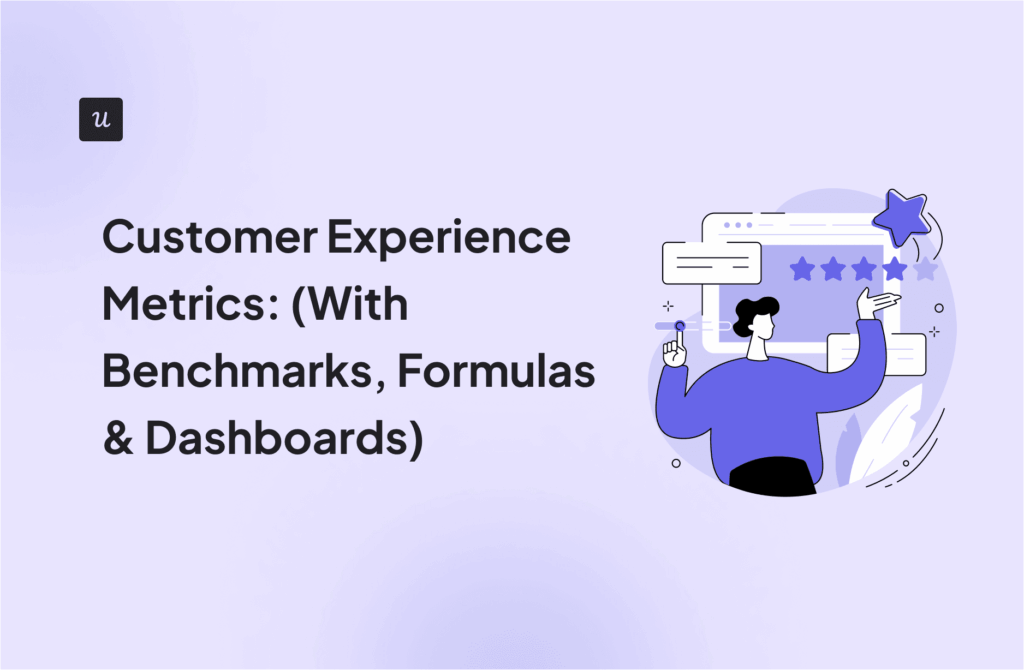![How to Analyze Customer Data In SaaS? [Methods & Examples] cover](https://blog-static.userpilot.com/blog/wp-content/uploads/2023/04/how-to-analyze-customer-data-in-saas_94c4b748ae7d1ad9e71ac910906db60a_2000.png)
Why is it important to analyze customer data? Because it’s one of the best ways to improve customer retention and grow faster in SaaS.
In this article, we cover:
- What customer behavior analysis is and why it’s important.
- 6 ways to collect and analyze customer data.
- What the best customer data platform is for SaaS companies.
How do you currently analyze customer data to understand user behavior?
What’s your biggest challenge with customer data analysis?
What is your primary goal when you analyze customer data?
Stop Guessing, Start Analyzing.
It looks like you’re ready to move beyond basic analytics. Userpilot helps you analyze customer data effectively to track user behavior, build better onboarding, and drive adoption—all without writing any code.
Try Userpilot Now
See Why 1,000+ Teams Choose Userpilot

What is customer data analysis?
Customer data analysis is the process of collecting and analyzing customer data to gain insights. When you better understand customers, you can improve products and services to meet customer needs.
What are the 4 types of customer data?
The four main types of customer data that deliver valuable insights are:
- User persona data: In SaaS, user persona data covers the characteristics, roles, jobs to be done, and other demographic information about users.
- Customer behavior data: Customer behavior data is centered on customer interactions – what people do inside your app. Tracking in-app engagement gives actionable insights on feature usage, page activity, and more.
- Customer journey activity data: This data tells you how users move through stages in their customer journeys. For example, what path do free trial users take to becoming paid users?
- Customer satisfaction data: Collecting customer satisfaction data involves surveying customers for customer relationship management. The most common satisfaction metrics include NPS, CES, and CSAT.
- Mobile analytics: Mobile surveys are a quick way to measure customer satisfaction, gather real-time feedback, and boost engagement.
6 Ways to collect customer data for customer analytics
Customer data analysis starts by gathering quality data across different customer touchpoints. Here are six ways to collect great customer data you can work with:
Use a signup flow to collect user persona data
Start collecting user persona data from day one during the signup flow.
Build a frictionless signup experience with SSO sign-in options. Then launch a welcome survey to ask users about their jobs to be done. Now it’s possible to start creating customer segments to give new customers a personalized onboarding experience.
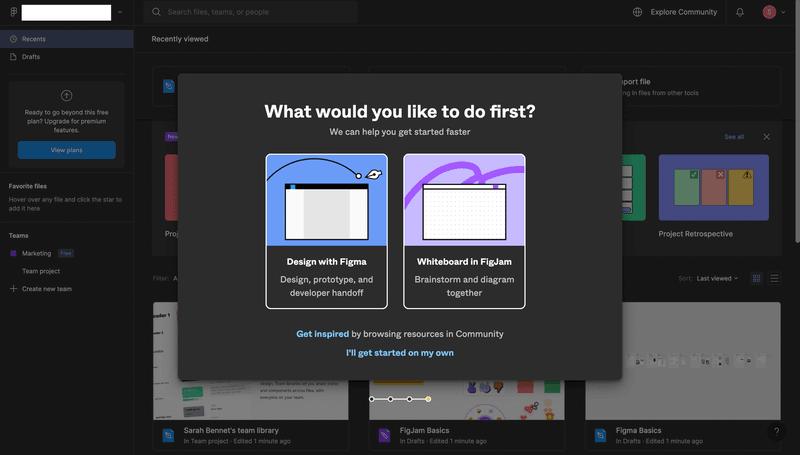
You can also use a signup survey that includes quick-to-answer questions. For example, Miro launches this welcome survey during onboarding with easy questions that don’t require any typing.
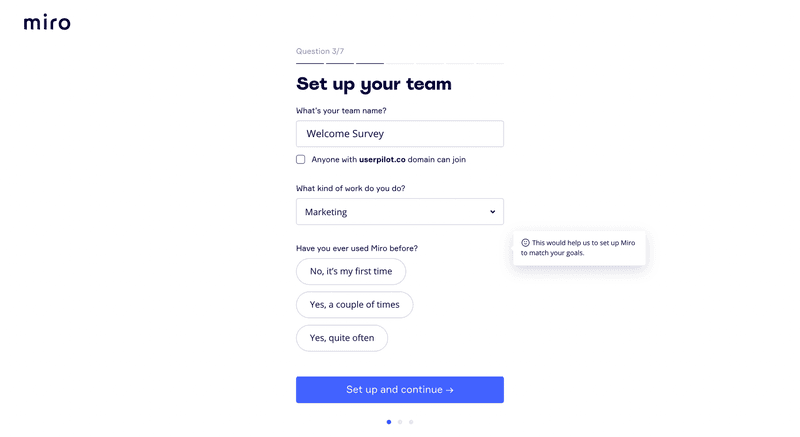
After users answer initial questions about their job role and Miro experience, a second survey page asks for their jobs to be done. All of this customer data is collected before they enter the app for the first time.
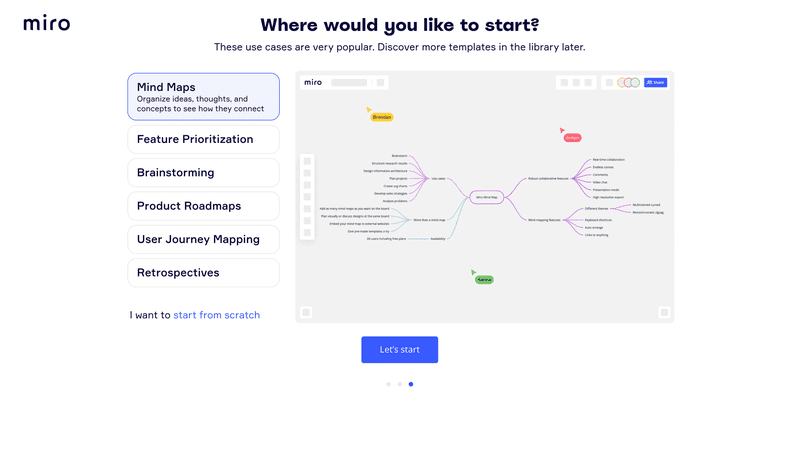
Tag features to monitor user engagement
Use feature tagging to track how existing customers engage with features. Tag in-app UI elements and then measure the clicks, scrolls, and hovers.
This makes it possible to see how users are engaging with a certain feature, right down to specific customer segments.
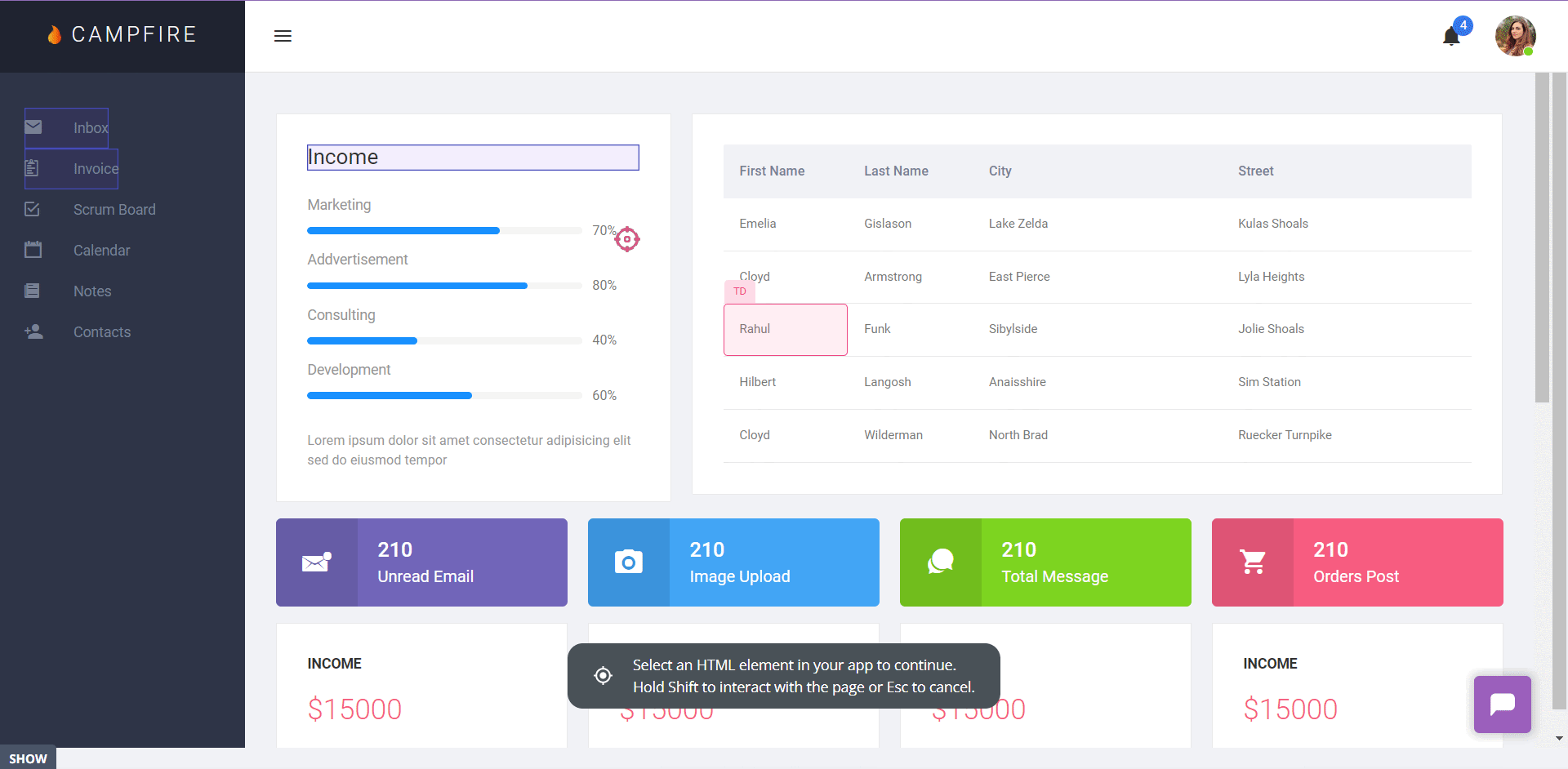
Use session recordings to collect user activity
Collect data on how users click through or navigate features with session recordings.
These are video recordings of real-life product interactions so you can see exactly how users navigate the app.
Look for areas where they experience difficulty or frustration so you can make product improvements.
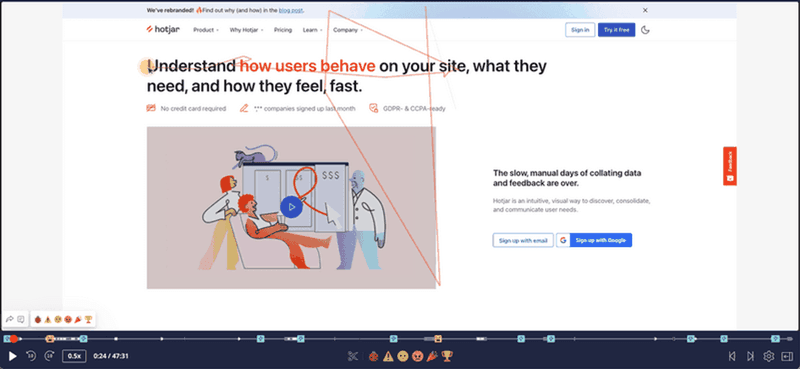
Use heat maps to collect user activity data
Heat maps track customer behaviors using a color-coded system. Red indicates high engagement, and blue means low engagement.
Heat maps are an excellent way to measure customer behavior to see what’s resonating and what’s not.
Here are the three main types of heat maps:
- Feature heat maps – they measure feature interaction frequency
- Click heat maps – track rage clicks and dead clicks
- Scroll heat maps – track how much attention users give to page sections

Track custom events to collect customer journey activity data
Analyze how users move through the customer journey by tracking custom events.
Custom events measure completion data for important touchpoints in the customer journey. For example, accounting software could measure how many users created an invoice.
This data gives you valuable insights into where users experience friction, based on low completion rates.
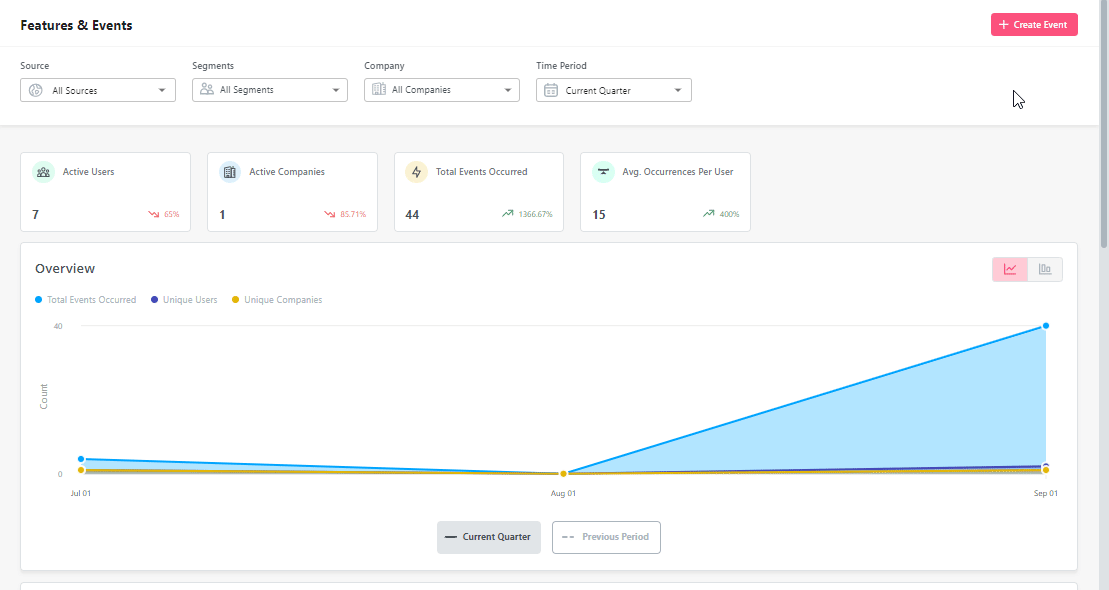
Use surveys to collect customer satisfaction data
Measure customer satisfaction with in-app surveys and mobile surveys. Trigger these surveys to show after users complete specific actions, like trying a feature for the first time. That way the feedback you gather is contextual and relevant to that experience.
Or, send NPS surveys to measure overall customer satisfaction. These measure how likely existing customers are to recommend your product or service to their network.
By collecting and analyzing both contextual and overall customer satisfaction data, you can improve the customer experience.
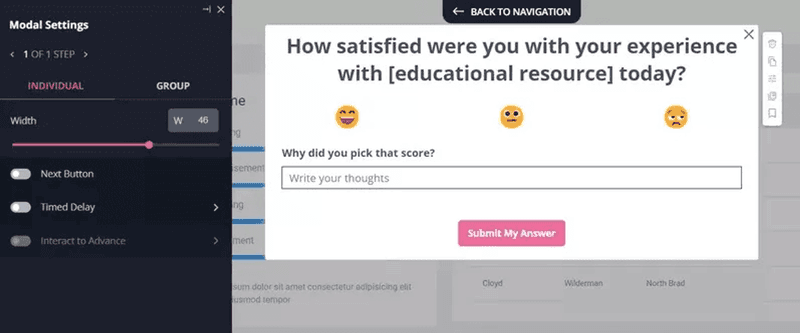
6 Actionable tactics to analyze customer data
Customer data analysis makes it possible to improve product adoption, fight churn, and make better product improvements. Here are six ways to use data for your customer data analysis projects to gain actionable insights!
Look at power users using data segmentation
Investigate what your best customers are doing right. Start by segmenting customers based on activity, such as the number of logins in the past 30 days. Then review the behavior of your power users so you can replicate it for new users.
For example, do your high-value customers engage with certain features more often? Prioritize these features during onboarding.
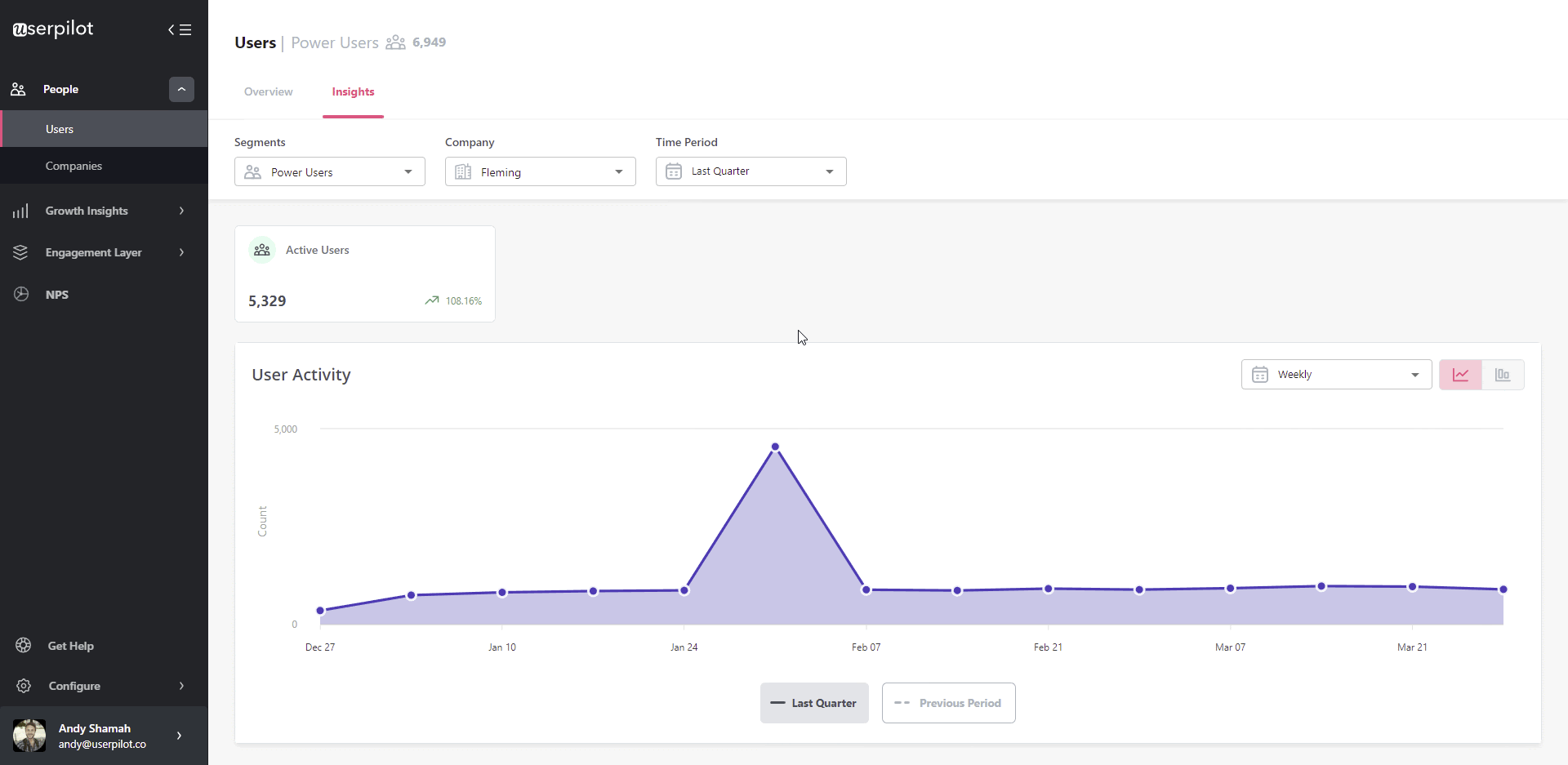
Track customer adoption progress using goals
Use data analytics to track and improve product adoption. First, set adoption goals with event tracking. It can either be one event or a group of many events that make up an adoption goal.
For example, a social media platform could track how many users schedule an Instagram post. Then monitor how users progress towards the goal and make process improvements if needed.
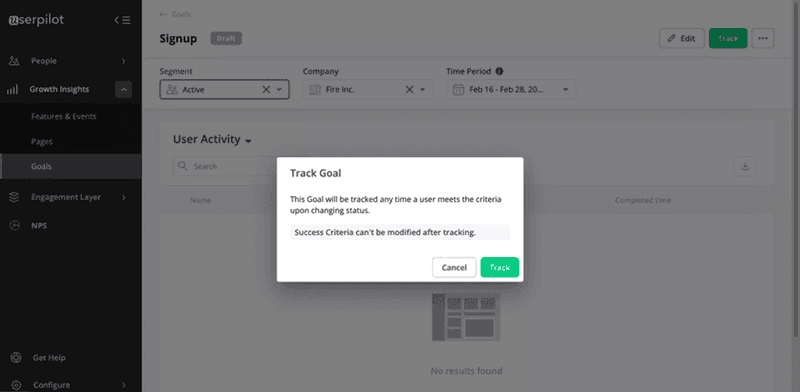
Make product improvements based on customer behavior data
Ensure your product is relevant and useful with customer behavior analysis. Check out your customer analytics to see usage patterns across the entire customer journey.
What features do users turn to frequently? Which features are underused? This information helps you plan a product roadmap that meets customer needs.
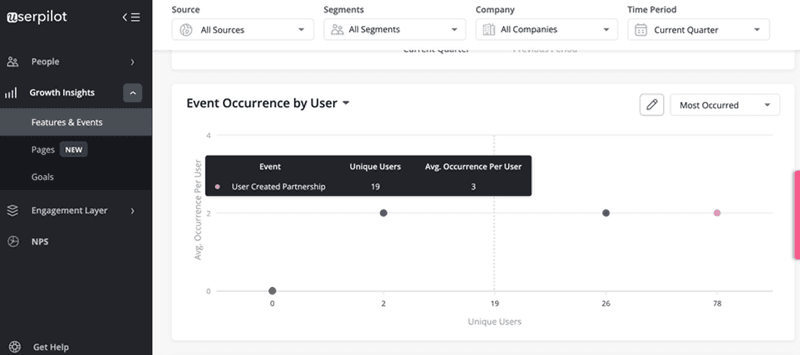
Tag qualitative responses to uncover trends
Collect customer feedback using in-app surveys, such as NPS surveys. Add open-ended questions to get context on survey responses.
Then, tag those qualitative responses to identify common pain points. It helps you understand how to improve your product and the customer experience.
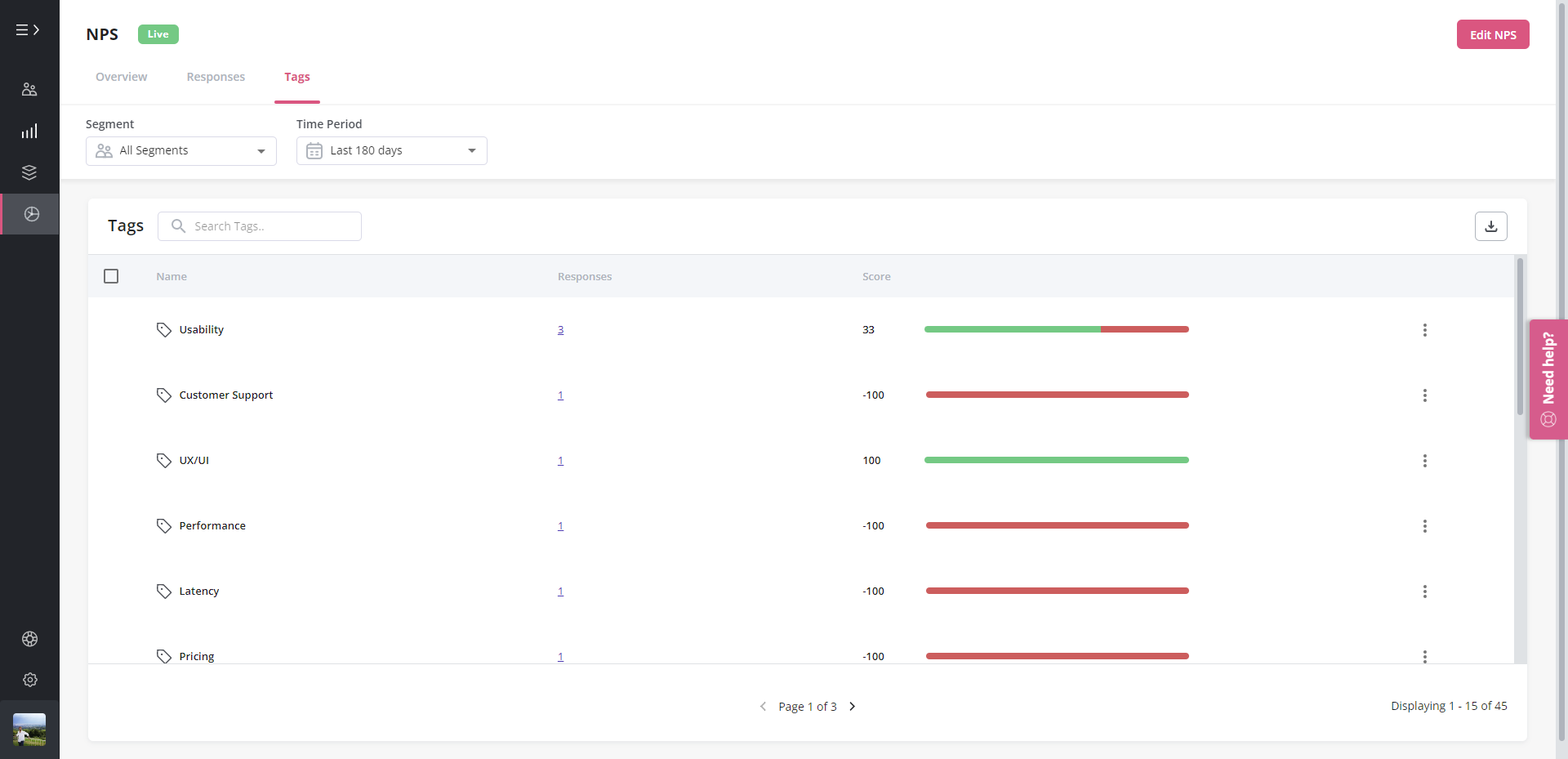
Track drop-off points with a funnel analysis
Funnel and data analysis can help you find common drop-off points in the customer journey. To do this, track conversion rates at every step of a certain process, like the onboarding flow.
If you notice low conversions from one step to the next, you know this is a friction point and can work on improvements.
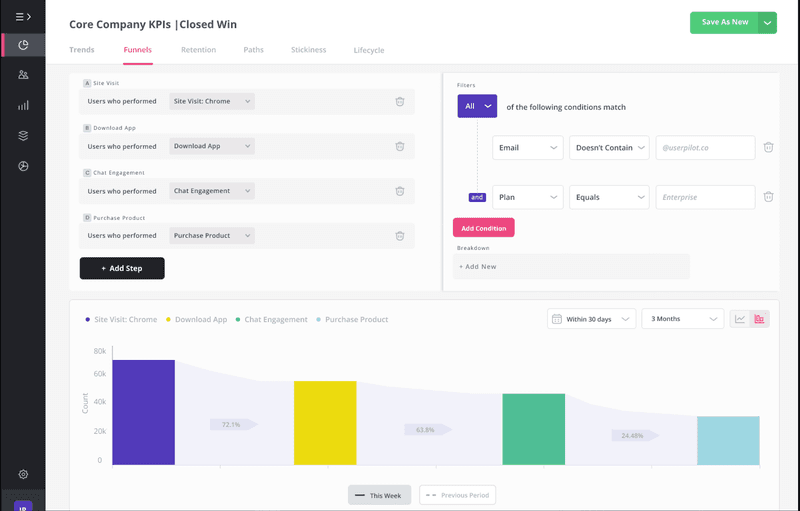
Userpilot – Best customer data platform for SaaS
Userpilot is a no-code platform that helps you collect and analyze data. You can create surveys, track in-app behavior, and view advanced customer analytics. Here’s how:
Create surveys to collect both quantitative and qualitative data
Surveys are an essential part of data collection. When you ask customers for direct feedback, you get clear insights into what they need and want. This helps you make smarter business decisions.
With Userpilot, create in-app surveys with follow-up questions to collect both qualitative and quantitative data.
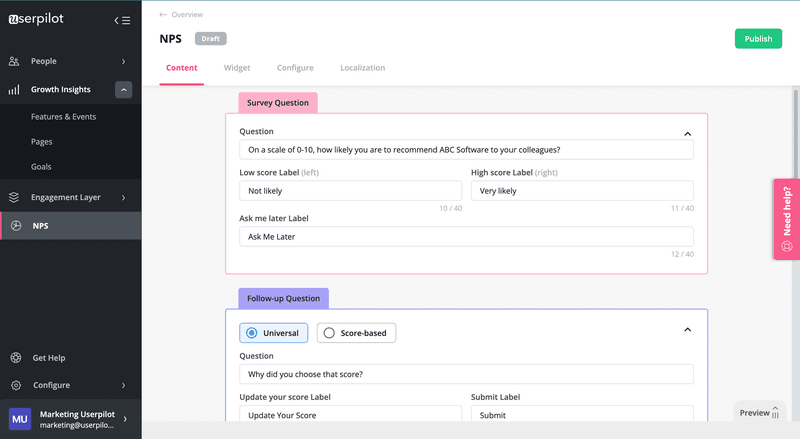
Track in-app behavior with feature tags, custom events, and goals
Conduct a customer behavior analysis with Userpilot’s tracking features. See how customers are reaching important milestones with custom event tracking.
Create goals to measure how many customers achieve necessary tasks. You can also do feature audits in just a few steps by tagging UI elements to measure activity.
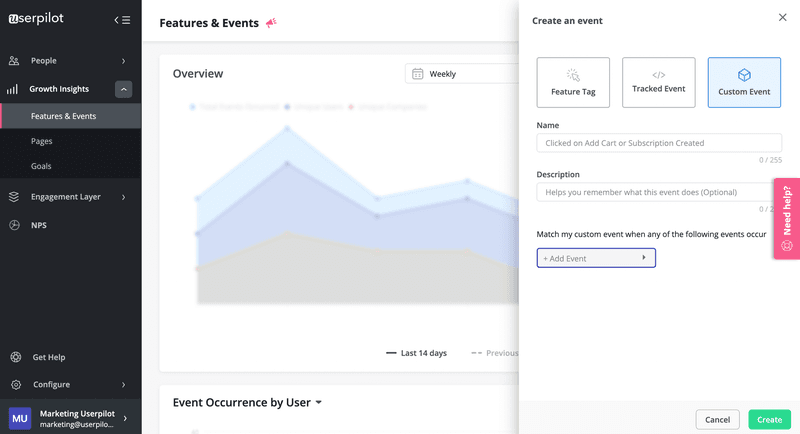
View advanced customer data analytics
Take a look at the Growth Insights tab in Userpilot to view your customer data analytics. Check out your page activity and filter the results by user segment to get more granular.
You can also investigate feature usage, event activity, and goal progress.
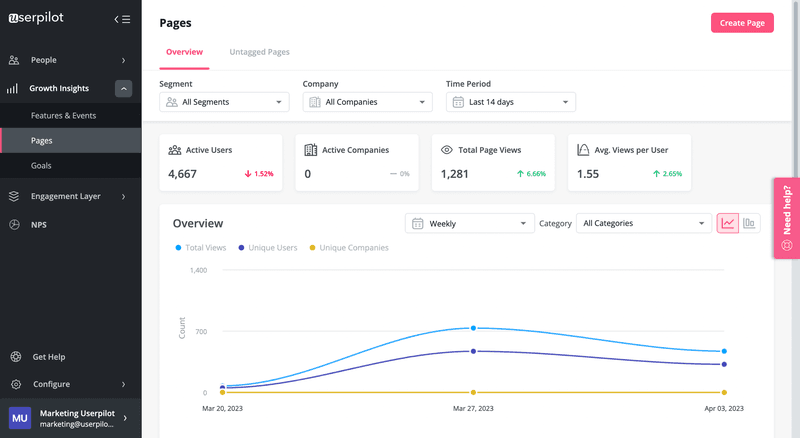
Conclusion
When you build a regular process to analyze customer data, you’re better able to understand how customers buy and meet customer demand. It makes expansion and retention easier.
With native mobile SDK, Userpilot empowers you to create intuitive mobile app KPI metrics and dashboards that provide clear insights into user behavior, engagement, and retention directly from your mobile applications.
Want to get started with analyzing customer data? Get a Userpilot Demo and see how you can collect and analyze customer data to make better business decisions.


